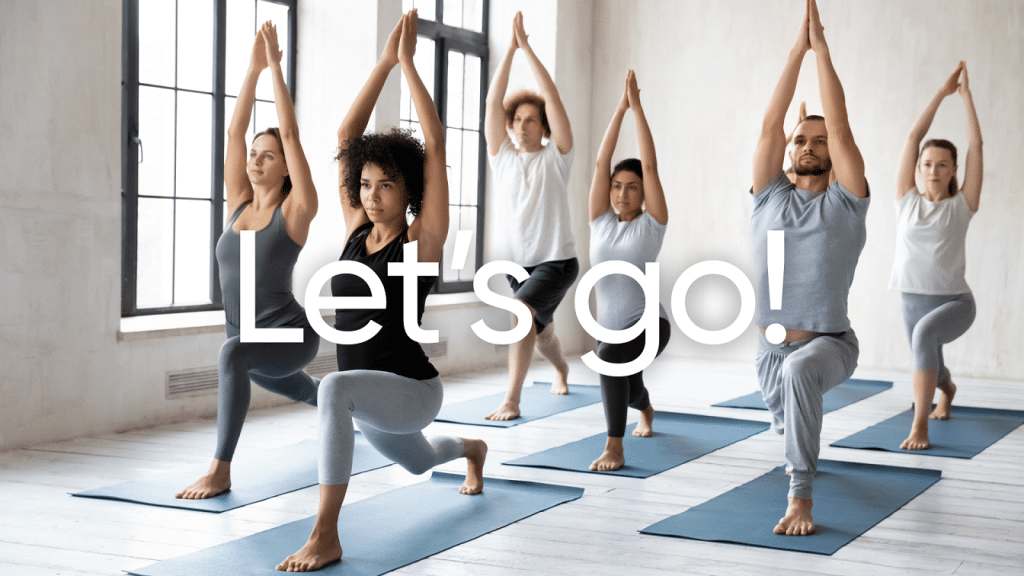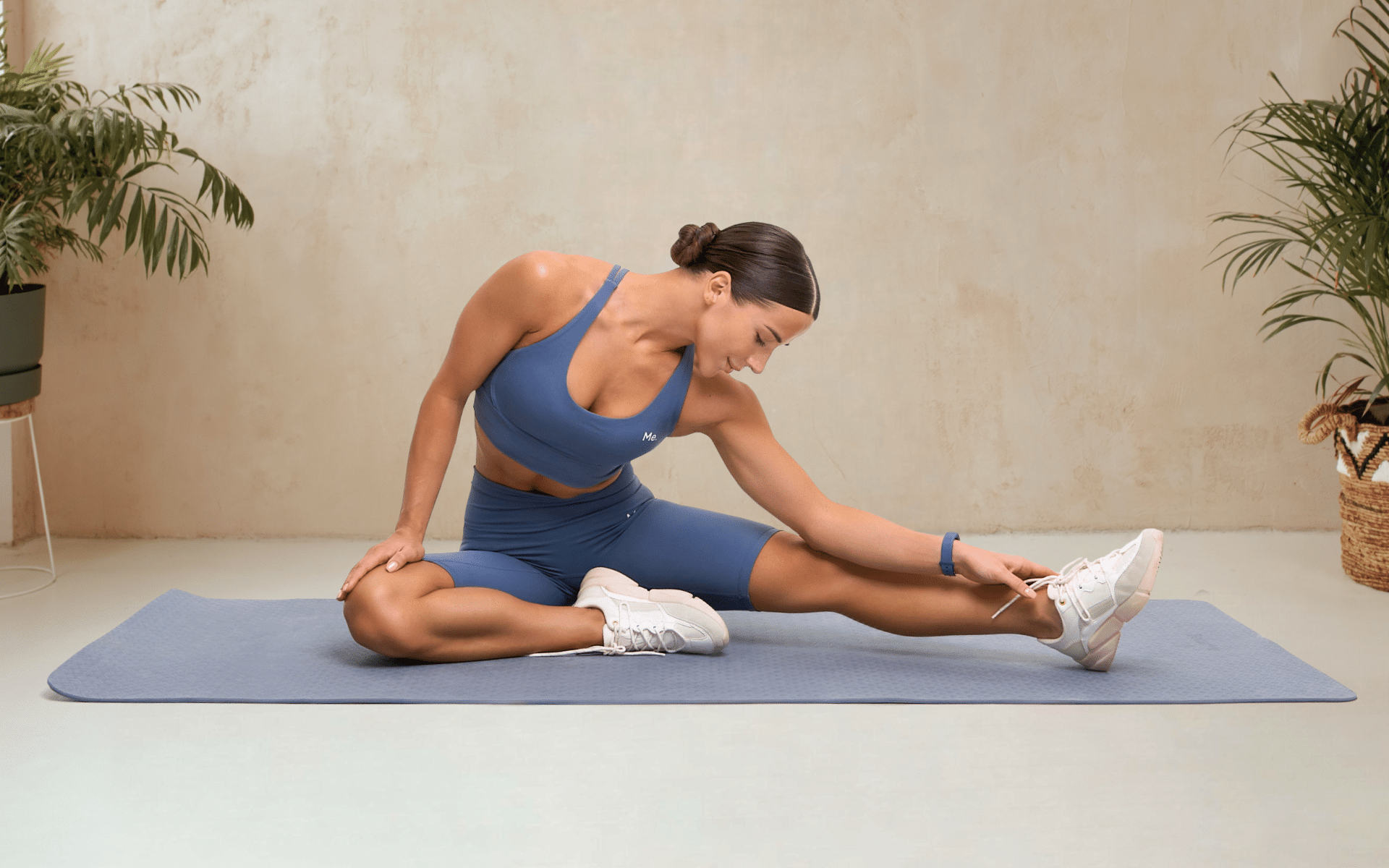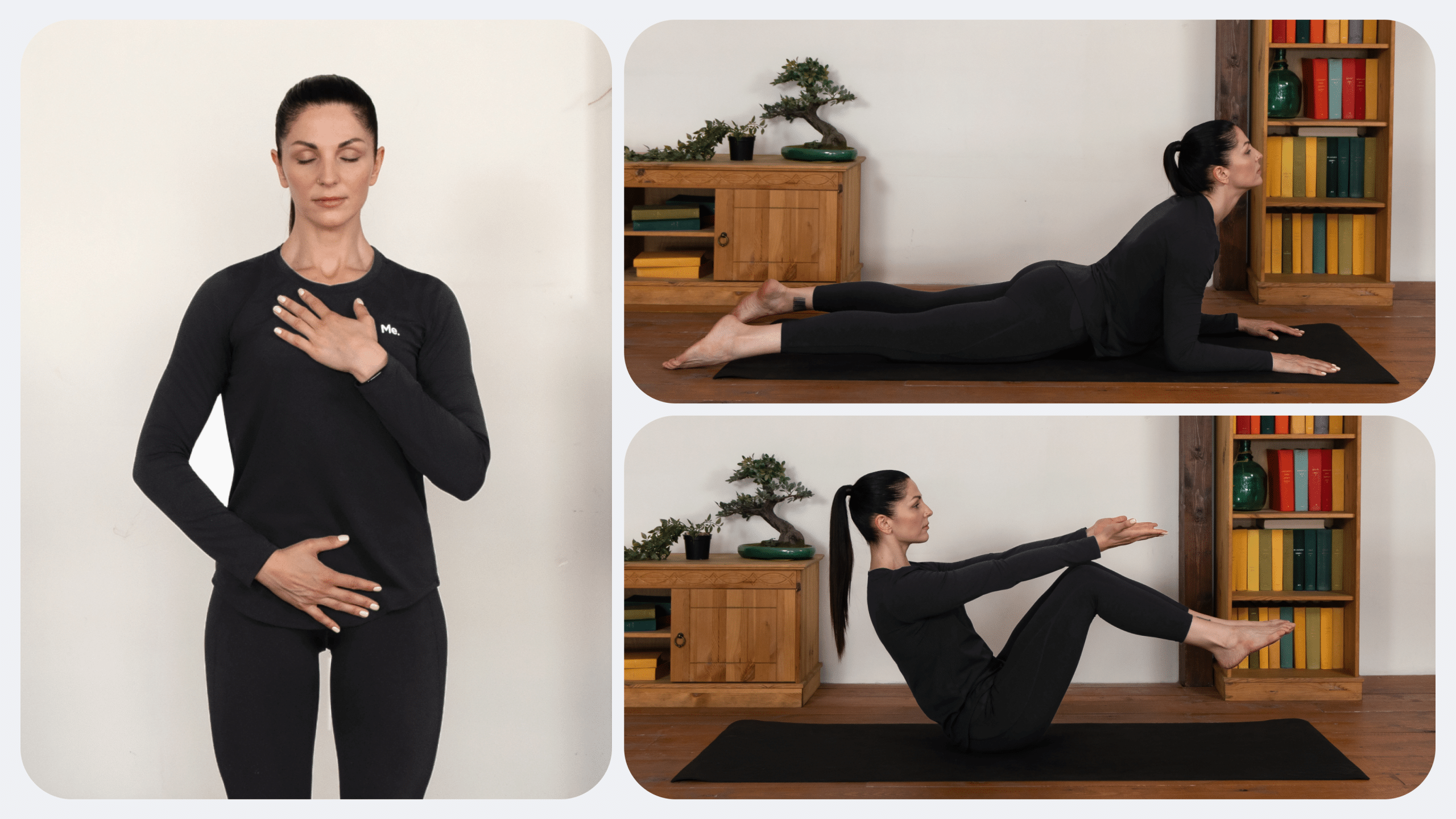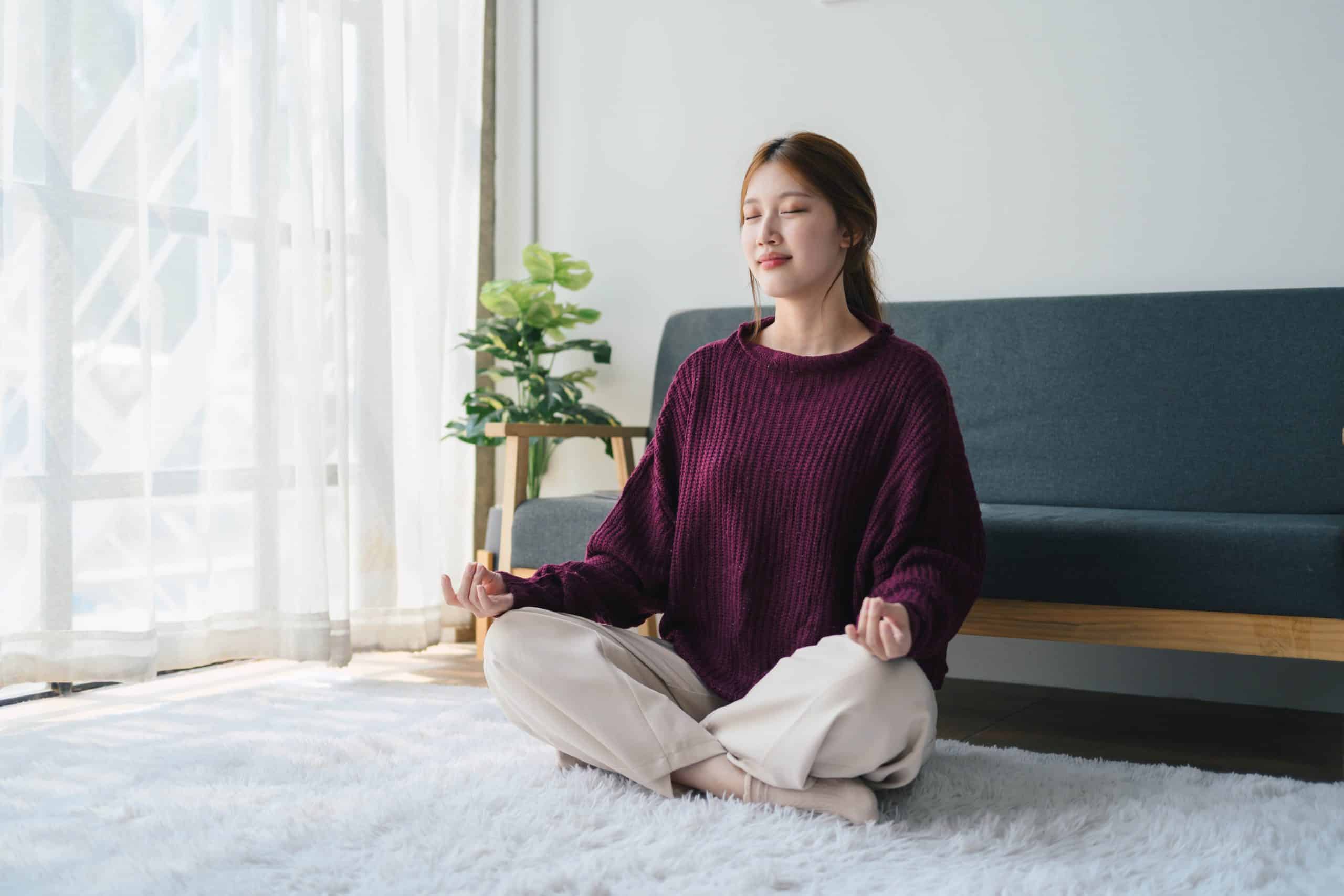Breathe in, breathe out—you do it at least 20,000 times a day. Like most things that come naturally, you may not give breathing a second thought, especially when you’re going through the hustle and bustle of your day-to-day life. But the way you breathe—and how well you breathe—can have a profound effect on your overall health and well-being, in both the short and long term. That said, what influences the quality of your breath, and how can you make sure you’re breathing correctly? Well, many factors come into play when it comes to breathing, but one of the most important is posture. The way you hold your body can affect the quality and depth of your breath. In turn, this can influence everything from your energy levels to your digestion. Think about it—if you’re hunched over at your desk all day, your chest is constricted and your diaphragm has less room to move. This can lead to shallower, more irregular breathing. Now that we have your attention, let’s take a more in-depth look at how posture and breathing are related, and why it matters.
Get your personalized
meal plan!
How Does Posture Affect Respiration?
Normal respiration occurs in a series of steps. First, the diaphragm contracts and moves downward, creating negative pressure in the chest cavity. This negative pressure causes air to rush into the lungs.
Then, the ribs and muscles between them lift the thoracic cage and expand the chest cavity. This allows the lungs to fill with even more air. Finally, the diaphragm relaxes and moves back up into the chest cavity, and the air that had rushed into the lungs is now exhaled (7).
This whole process requires a certain amount of space in the chest cavity to happen effectively. When you have good posture, your chest is open and your diaphragm has more room to move. This allows for deep, regular breathing (28).
Here’s what happens when you have poor posture:
- Your thoracic region is compressed – the space in your chest cavity is reduced, which limits how much air your lungs can take in
- Your diaphragm has less space to move – this makes it harder for the diaphragm to contract and expand, which can make breathing more shallow
- The muscles between your ribs are restricted – without the support of these muscles, your ribs can’t lift properly to expand your chest cavity
- Your sternum is depressed – this further constricts your chest and limits how much air your lungs can take in.
- Your larynx may be compressed – the larynx is the voice box, and when it’s compressed, it can make it difficult to speak or even breathe properly
All of these factors can lead to shallow, irregular breathing. In some cases, it can even cause you to hold your breath or take short, choppy breaths.
According to the American Council on Exercise, specific postural faults that can contribute to poor breathing include (8):
- Curved upper back (kyphosis) – causes your shoulders to round forward, which can lead to a hunched posture. This results in depression of the sternum and a limited range of motion for the rib cage.
- Exaggerated lumbar curve (lordosis) – causes your lower back to arch excessively, which can lead to a swayback posture. This limits the diaphragm’s range of motion and over stretched abdominal muscles which are essential for proper breathing.
- Exaggerated curve in the neck (lordosis of the cervical spine) – can cause your head to jut forward, which leads to compression of the larynx and a decrease in diaphragmatic function.
Read More: Pilates For Posture: How It Works And The Best Exercises To Do
Poor Tongue Posture And Breathing
Many assume that as long as the tongue is positioned correctly during swallowing, it must be in the correct position for breathing.
Unfortunately, this is not always the case. The tongue can have a big impact on how you breathe, and if it’s not positioned correctly, it can cause all sorts of problems.
A properly aligned tongue should rest gently against the roof of your mouth, with the tip just behind your upper front teeth. The sides of the tongue should touch the inside of your molars.
If your tongue is not positioned correctly, it can cause several problems, including:
- Reduced airflow – if your tongue is not resting against the roof of your mouth, it can block the airway and make it difficult to breathe properly (11).
- Mouth breathing – if your tongue is not in the correct position, you may find yourself mouth breathing more often.
- Sleep apnea – tongue position plays a role in sleep apnea, and if your tongue is not positioned correctly, it can make the condition worse (25).
Can Poor Posture Affect Lungs?
Absolutely. Poor posture can have several negative effects on your lungs, including:
- Reduced lung capacity – poor posture can compress the chest and limit how much air the lungs can take in (3).
- Reduced diaphragmatic function – as we mentioned before, the diaphragm is a muscle that helps you breathe. When it’s not functioning properly, it can make it difficult to breathe deeply and efficiently (27).
- Increased risk of respiratory infections – poor posture can lead to several problems that make it easier for respiratory infections to take hold, including reduced lung capacity and reduced diaphragmatic function (27).
Whether you’re a workout beast or just a beginner making your first foray into the world of fitness and dieting – BetterMe has a lot to offer to both newbies and experts! Install the app and experience the versatility first-hand!
In addition to the effects on your respiratory system, poor posture can lead to:
Digestive Issues
When you breathe deeply, it helps to massage the digestive organs and promote proper digestion. If you have poor posture, it can make it difficult to take deep breaths, which can lead to digestive problems like flatulence and bloating (12).
Furthermore, a compressed diaphragm can put pressure on the stomach and cause acid reflux (23).
Poor Circulation
Proper posture helps to keep the spine in alignment, which allows the muscles and ligaments to work properly.
When you have poor posture it can lead to muscle tightness and tension, which can compress the blood vessels and nerves (18). This can lead to poor circulation and a host of other problems.
Mental Health Issues
Breathing is one of the most important functions in the body, and when it’s not working properly it can have a big impact on your mental health. Poor breathing has been linked to anxiety, depression, and even panic attacks (26).
Fatigue
Not being able to breathe properly can lead to a whole host of problems that can leave you feeling tired and lethargic. These problems include decreased oxygen levels in the blood, increased carbon dioxide levels in the blood, and reduced lung capacity (17).
Poor Sleep
Poor sleep and fatigue go hand-in-hand, and if you’re not getting enough rest, it can take a toll on your overall health (21). Poor breathing has been linked to several sleep disorders, including sleep apnea, restless leg syndrome, and insomnia (13).
Read More: Types Of Posture: Which One Do You Have?
Other Factors That Influence How Well You Breathe
While posture is a major factor that affects respiration, it’s not the only one. Other factors that can influence the quality of your breath include:
Anxiety
Anxiety can have a big impact on your breathing. When you’re anxious, your body goes into fight-or-flight mode, which causes the sympathetic nervous system to kick into gear. This increases your heart rate and respiration (5).
While this response is important in times of danger, chronic anxiety can lead to several problems, including hyperventilation, chest pain, and shortness of breath (10) (16).
Smoking
Smoking is one of the worst things you can do for your respiratory system. Cigarette smoke contains thousands of chemicals that damage the lungs and airways (20).
In addition to the physical effects of smoking, it can also lead to increased anxiety and stress, which can make it even harder to breathe properly (6).
Dehydration
Dehydration can cause many problems, including dry mouth, fatigue, and headaches (19).
When you’re dehydrated, your body doesn’t have enough fluids to function properly, which can lead to decreased oxygen levels in the blood. This can make it difficult to breathe and can leave you feeling tired and run down (24).
Obesity
Carrying around extra weight can take a toll on your body, and it can make it more difficult to breathe.
Obesity can lead to several respiratory problems, including sleep apnea, asthma, and chronic obstructive pulmonary disease (COPD) (15). This is partly because extra weight puts pressure on the chest and lungs, making it difficult to expand the thoracic cage and take deep breaths.
What Can You Do To Improve Your Breathing?
There are several things you can do to improve your breathing and make it easier to get the oxygen you need. These include:
Practicing Good Posture
Posture is one of the most important factors that affect respiration. Practice good posture by standing up straight and keeping your shoulders back. When you sit, make sure your back is straight and your shoulders are relaxed.
- Ergonomic adjustments: Making simple ergonomic adjustments in your home and office can help improve your posture. This may include using a standing desk, adjusting your chair, or using a laptop stand.
- Wear comfortable shoes: Wearing comfortable shoes that support your feet can help improve your posture. Avoid high heels and tight shoes which constrict your movement.
- Take breaks often: If you sit or stand for long periods, be sure to take breaks often. Walking around and stretching will help to keep your muscles loose and improve your posture
- Chiropractic care: Chiropractic care can also help improve your posture (1). Chiropractors use adjustments and manipulations to align the spine and improve function. This can lead to better posture and less pain.
- Massage therapy: Massage therapy can help to relax the muscles that support your spine. This can lead to improved posture and less pain (14).
Dropping pounds by the dozens without putting yourself through the wringer is everyone’s weight loss pipe dream. But what if we told you that the BetterMe app can make that happen? Keep yourself in prime shape with our fat-blasting workouts, delicious budget-sparing recipes, and body-transforming challenges with our app!
Exercises To Improve Posture
Exercise is one of the most important things you can do to improve your posture. Strong muscles help support your spine and keep your body in proper alignment.
1. Pilates
Pilates is a great way to improve your posture and overall strength. By targeting the deep abdominal muscles, you can help support your spine and improve your posture.
2. Yoga
Yoga is another excellent way to improve your posture. The various poses and stretches help lengthen and strengthen the muscles that support your spine.
3. Strength Training
Strength training is important for posture because it helps to build strong muscles that can support your spine. focus on exercises that work the back, shoulders, and core muscles.
4. Posture Corrective Exercises
There are specific exercises that you can do to help improve your posture. These exercises help strengthen the muscles that support your spine and improve your alignment (2). Specific exercises may include chest openers, shoulder shrugs, and back extension exercises.
5. Walking
Walking is a great way to improve your posture. It helps lengthen the spine and strengthens the muscles that support it. Be sure to keep your shoulders down and back and tuck your chin when you walk.
Exercising For Respiratory Health
Exercise is one of the best things you can do for your respiratory system. It helps strengthen the muscles that support the lungs and helps improve lung function (4). Furthermore, exercise can help reduce stress and anxiety, which can make it easier to breathe.
Finally, exercise can help you maintain a healthy weight, which can reduce the strain on your respiratory system (30).
Improve Tongue Posture
The position of your tongue can have a big impact on your breathing. If your tongue is too far forward in your mouth, it can block the airway and make it difficult to breathe.
To improve tongue posture, make sure your tongue is resting against the back of your teeth. You should also avoid sticking your tongue out or holding it between your teeth.
Some myofunctional therapists also recommend exercises to improve tongue posture, such as sticking your tongue out and then moving it from side to side or up and down.
Quit Smoking
If you smoke, quitting is one of the best things you can do for your health. There are several resources available to help you quit, including counseling, support groups, and medication (22).
Know The Different Breathing Techniques
There are several different breathing techniques that can help to improve respiration.
Some of these include pursed-lip breathing, diaphragmatic breathing, and abdominal breathing. These techniques can help to increase the amount of oxygen in the blood and make it easier to breathe.
Pursed-Lip Breathing
This technique involves breathing in through your nose and out through your mouth.
To do this:
- Place your hands on your stomach and inhale slowly through your nose.
- As you exhale, purse your lips and breathe out slowly.
Diaphragmatic Breathing
This technique involves breathing deeply from your diaphragm, which is a muscle that helps to support the lungs.
To do this:
- Take a deep breath through your nose and allow your stomach to expand.
- As you exhale, tighten your stomach muscles and breathe out slowly through your mouth.
Abdominal Breathing
This technique involves breathing from your abdomen, which is the lower part of your stomach. This type of breathing can be helpful if you’re trying to relieve stress or tension, but it’s not as efficient as diaphragmatic breathing.
To do this:
- Place one hand on your stomach and the other on your chest.
- As you inhale, allow your stomach to expand and your chest to rise.
- As you exhale, tighten your stomach muscles and allow your chest to fall.
Get Plenty Of Rest
When you’re tired, your body isn’t able to function properly, which can make it difficult to breathe. Make sure to get plenty of rest so that your body can recover and repair itself.
Drink Plenty Of Fluids
Drinking plenty of fluids is important for keeping your body hydrated. When you’re dehydrated, your body doesn’t have enough fluids to function properly, which can lead to decreased oxygen levels in the blood (29). Drink eight glasses of water a day to keep your body hydrated.
Avoid Polluted Areas
If you live in an area with a lot of pollution, it’s important to avoid exposure to the pollutants. These can irritate the lungs and make it difficult to breathe. If you must be in a polluted area, wear a mask to protect your lungs.
Relieve Stress And Anxiety
Stress and anxiety can make it difficult to breathe. Different methods can be used to relieve stress and anxiety, including exercise, relaxation techniques, and counseling (9).
See A Doctor If You’re Having Trouble Breathing
If you’re having trouble breathing, it’s important to see a doctor. Several respiratory conditions can make it difficult to breathe, and some of these require medical treatment.
Seeing a doctor can also help you rule out other causes of difficulty breathing, such as heart disease or anxiety.
The Bottom Line
When it comes to posture and breathing, there is a close relationship. Good posture helps ensure that your lungs can function properly, and proper breathing helps improve your posture.
By focusing on both of these factors, you can help improve your overall health and well-being.
DISCLAIMER:
This article is intended for general informational purposes only and does not serve to address individual circumstances. It is not a substitute for professional advice or help and should not be relied on for making any kind of decision-making. Any action taken as a direct or indirect result of the information in this article is entirely at your own risk and is your sole responsibility.
BetterMe, its content staff, and its medical advisors accept no responsibility for inaccuracies, errors, misstatements, inconsistencies, or omissions and specifically disclaim any liability, loss or risk, personal, professional or otherwise, which may be incurred as a consequence, directly or indirectly, of the use and/or application of any content.
You should always seek the advice of your physician or other qualified health provider with any questions you may have regarding a medical condition or your specific situation. Never disregard professional medical advice or delay seeking it because of BetterMe content. If you suspect or think you may have a medical emergency, call your doctor.
SOURCES:
- Chiropractic adjustment (2002, mayoclinic.org)
- Effect of an exercise program for posture correction on musculoskeletal pain (2015, ncbi.nlm.nih.gov)
- Effect of different sitting postures on lung capacity, expiratory flow, and lumbar lordosis (2006, pubmed.ncbi.nlm.nih.gov)
- Exercise and Lung Health (2020, lung.org)
- Fear and the Defense Cascade: Clinical Implications and Management (2015, journals.lww.com)
- How cigarette smoking may increase the risk of anxiety symptoms and anxiety disorders: a critical review of biological pathways (2013, onlinelibrary.wiley.com)
- How do lungs work? (2016, ncbi.nlm.nih.gov)
- How Posture Affects Breathing (2015, acefitness.org)
- How to Relax in Stressful Situations: A Smart Stress Reduction System (2020, mdpi.com)
- Hyperventilation in Panic Disorder and Asthma: Empirical Evidence and Clinical Strategies (2010, ncbi.nlm.nih.gov)
- Impact of airway dysfunction on dental health (2020, ncbi.nlm.nih.gov)
- Influence of body posture on intestinal transit of gas (2003, ncbi.nlm.nih.gov)
- Insomnia and Obstructive Sleep Apnea (2014, ncbi.nlm.nih.gov)
- Massage (n.d., physio-pedia.com)
- Obesity and respiratory diseases (2010, ncbi.nlm.nih.gov)
- Panic Disorder and Chest Pain: Mechanisms, Morbidity, and Management (2002, ncbi.nlm.nih.gov)
- Physiology, Respiratory Drive (2022, ncbi.nlm.nih.gov)
- Postural awareness and its relation to pain: validation of an innovative instrument measuring awareness of body posture in patients with chronic pain (2018, biomedcentral.com)
- Public knowledge of dehydration and fluid intake practices: variation by participants’ characteristics (2018, biomedcentral.com)
- Pulmonary Diseases – How Tobacco Smoke Causes Disease: The Biology and Behavioral Basis for Smoking-Attributable Disease (2010, ncbi.nlm.nih.gov)
- Relations between sleep, fatigue, and health-related quality of life in individuals with insomnia (2010, sciencedirect.com)
- Smoking Cessation (2022, ncbi.nlm.nih.gov)
- Symptomatology Correlations Between the Diaphragm and Irritable Bowel Syndrome (2018, ncbi.nlm.nih.gov)
- Systemic but not local rehydration restores dehydration-induced changes in pulmonary function in healthy adults (2021, journals.physiology.org)
- The Anatomical Relationships of the Tongue with the Body System (2018, ncbi.nlm.nih.gov)
- The breathing conundrum – interoceptive sensitivity and anxiety (2013, ncbi.nlm.nih.gov)
- The effect of body position on pulmonary function: a systematic review (2018, biomedcentral.com)
- The Effect of Posture on the Diaphragm (n.d., physio-pedia.com)
- Water, hydration, and health (2010, academic.oup.com)
- Weight-Loss and Maintenance Strategies (2004, ncbi.nlm.nih.gov)




















